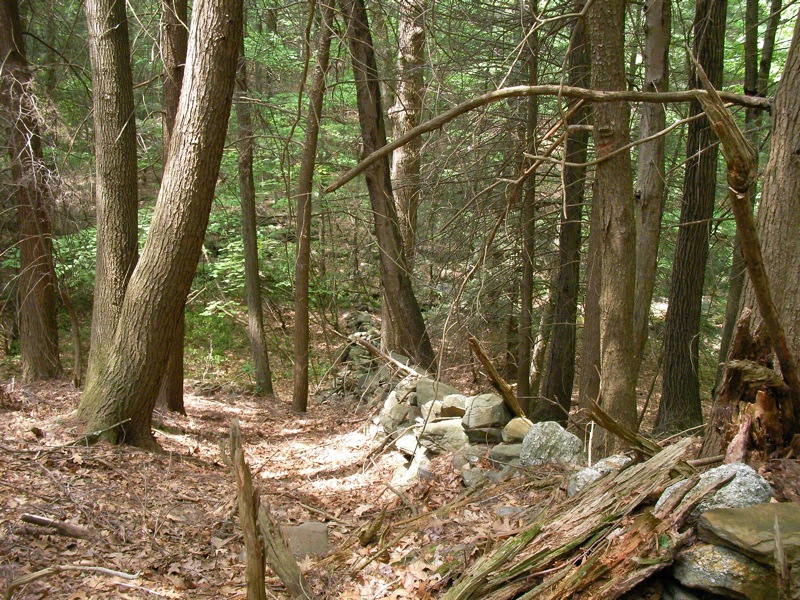Second growth

Photo: JON_CF, Creative Commons, some rights reserved
Like most people who live outside of North Country villages, I live on what used to be a farm. In our case we own the four acres that includes the original farmhouse of what was once a 59-acre dairy farm. The barn is long gone, but its sandstone foundation, a horse plow, a cartwheel, a grindstone, two dug wells, and the ironwork for a sliding barn door remain. The stone fences are long rounded mounds covered with lichen and leaves, broken here and there by the trunks of fully mature trees.
Second growth forest covers the pasture, and the reservoir behind Sugar Island Dam covers much of where Potsdam sandstone was quarried to build the village four miles north. An old narrow-gauge railbed that served the quarries cuts a straight line through woods towards town. The rails are long gone, along with the bridges that carried the train between the islands toward the western bank of the river and the Clarkson stoneyard.
Out in the river toward town remain other ruins of the pre-hydroelectric era, great cairns of loose stone that once anchored booms to contain the logs that were floated down the Raquette from lumber camps in the mountains during high water, fodder for the sawmills and small manufactories that ran off water power at the foot of Fall Island.
I suppose we, too, are second growth on this land, living lives very different from the first-growth forest dwellers whose hunting lands these were, who named this stretch of fast water Nihanwate (laughing waters). And very different from the newly-minted Americans who cleared the forests around Hannawa for farming and industry.
I try to picture sometimes what my patch will look like after another century or two, when time overtakes the fragility of our labors, too. What will remain? What will vanish utterly? And what will linger as a weathered jumble to incite the curiosity of the third growth and the fourth?
Tags: listeningpost








Only second growth? I heard the french took the trees for their navy as did the British before the lumber barons. Nice piece. Puts me to mind of an old Dan Berggren song.
Dale, great history for our area.
Chuck
It is a fascinating thought! I remember back in the day collecting folklore (we worked from dawn to dusk working on that collection…not!) I heard that in the 1800’s places like Fort Jackson, Skinnerville and Catherineville were the population centers of the county and Massena was just a hamlet. A friend of mine spent an afternoon leading the Youth Conservation Corps looking through the Catherineville State Forest for any sign of habitation. I think he said they found one cellar hole. That was a booming town less than 200 years ago.
The other thing I wonder about is the change in social values. If anyone had told me when I was growing up in the 1960’s that the US would legalize gay marriage, I would have thought them out of their minds. I wonder what judgment that I hold today will fall in the next 20 years? Will it be eating meat? Or maybe it will be something that isn’t even questioned yet.
This story calls to mind Robert Frost, especially his “The Black Cottage.” Frost tracked the fragility of human labor in the ruins of our habitations and the ruin we make, repair or fail to repair each day.
when we were kids my siblings and I would ride our ponies and horses deep into the Adirondack woods near our home on trails that had long ago worn through the thin soils to rock and sand where even hardy plants failed to take root. in the narrow flats between cobbled hills the woods were dark but open under canopies of immense pasture pines, thick waisted, many armed but stunted versions of the straight and massive old growth white pine that still existed here and there in ones or twos. rock walls ran at angles through the woods sometimes miles from any existing road and once in a while there would be a bit of a clearing, just enough to see a patch of sky above, and an aged apple tree still setting wormy little apples that were puckering tart in summer. those old apple trees are ghosts in the woods to me, shades of the hardscrabble farms, the last living thing to remember what was, and soon to be gone themselves, maybe a pile of rot and moss in just a few decades.
….tell a story about Brandon,NY please. anyone?